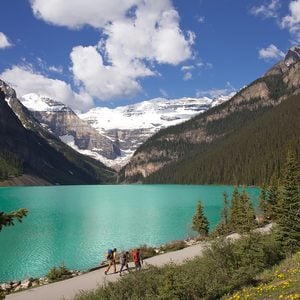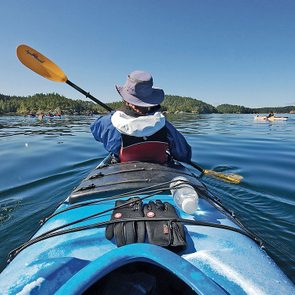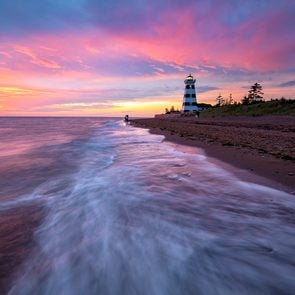Paddling B.C.’s Broughton Archipelago
Exploring the area's history, culture and wildlife by kayak.
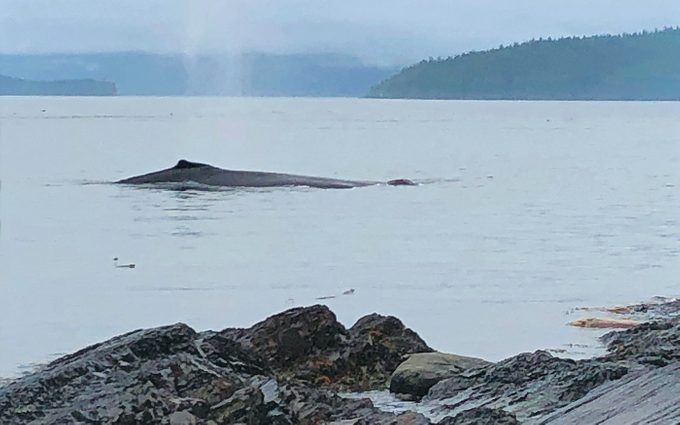
My Broughton Archipelago Adventure
I sat up in my sleeping bag and strained to hear it. In the misty morning calm, I heard it again, the huff of a humpback whale. Scrambling out of my tent, finding my footing with bleary eyes I clamoured over the rocks to the water’s edge just in time to see a humpback cruising by, mere feet away. It was exhilarating! My first time seeing a whale up close. I’ve come to know that each time seeing one is just as exhilarating as the first time.
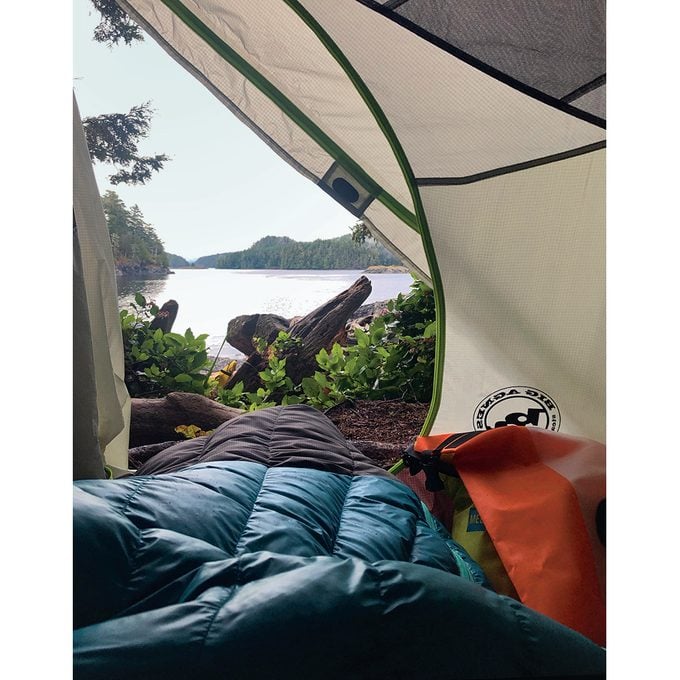
A Humpback Highway
A group of us were camped on the shore of B.C.’s Flower Island in Broughton Archipelago Provincial Park on a seven-day Level-2 Paddle Canada sea kayaking course. These islands have been utilized by First Nation peoples for generations. Flower Island is situated along Blackfish Sound, seemingly a humpback highway that week. We were lucky to witness humpbacks breaching and feeding with frequency, although not as close by as on that first day. The week was full of course content, practical knowledge and skills to go over, my head was crammed with paddle strokes, rescues, towing, weather knowledge, currents, tides, navigation and charts. As rigorous as the schedule was, it was also about discovery and exploring this beautiful area and its history and rich cultural heritage.
Using Flower Island as our base camp, we explored the channels and islands surrounding it. On the north side of Berry Island, we located the faint orange of the well-known petroglyph called Baxbakwalanuxsiwae—the Cannibal at the North End of the World. To the right of it, along the bottom of the sheer cliff wall you will see a rock formation known as the “Chief’s Bathtub,” a natural rock basin that fills at high tide. According to folklore, the local chief would bathe in this rock basin in water warmed with hot stones taken from a nearby fire.
Discover more hidden gems in B.C.
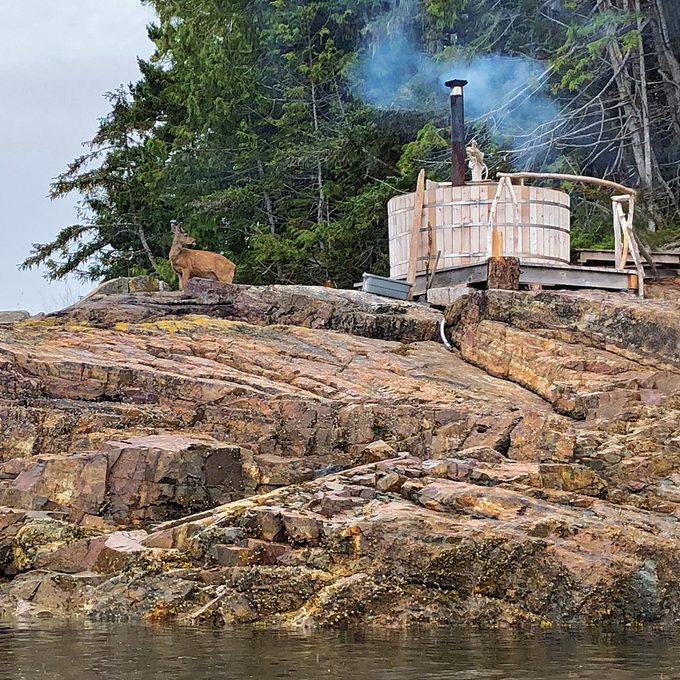
A Glimpse of Glamping
After a day spent paddling, I wished I could sit in such a hot tub as well. Cruelly, one could be seen from our campsite on adjacent Swanson Island. A big beautiful, wood-heated tub, part of Spirit of the West Adventures kayaking-glamping experience. I was resigned to tough it out—sitting on the grassy bluff of Flower Island watching the whales and sunsets, sipping on a glass of wine would just have to do.
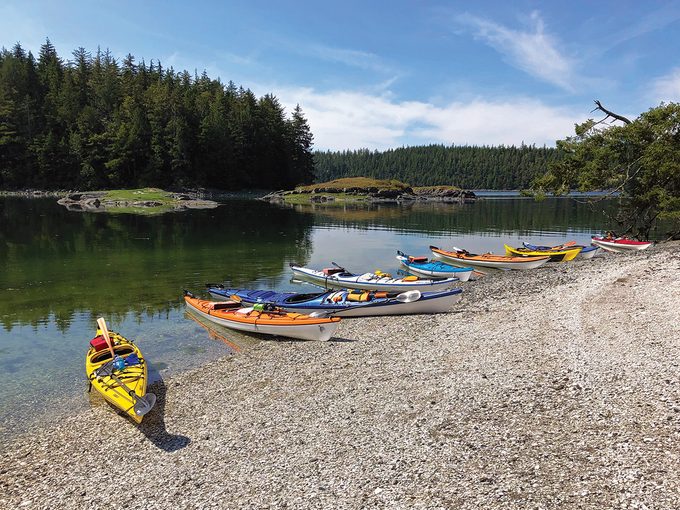
Echoes of the Past
Mound Island would have been our other camp spot choice. The white midden beaches containing crushed clam shells show remnants of the dwellings of the First Nations who had lived here. The narrow channel between Mound Island and Harbledown Island was a good place to trap fish in the rising tide. Closing my eyes and facing the sun, I could imagine the bustle of the village at that time. Working together to forage, gather, cook, preserve and sustain the resources available.
Another day’s paddle took us down Village Channel to Village Island. Last inhabited in the 1960s, its village and surrounding territory belong to the Mamalilikulla First Nations people. Although not currently occupied by residents, it is a sacred land site to its people and is in the process of ongoing stewardship and revitalization, not only for ecotourism and cultural tours, but for the young First Nations that have never had an opportunity to visit their ancestral lands.
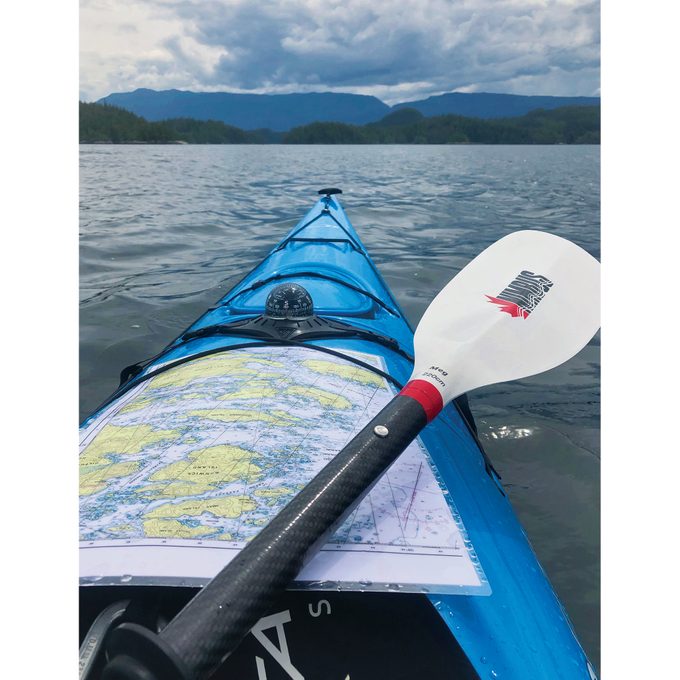
Reflections on a Devastating Day
It is an area rich in history. It is the site of the infamous potlatch raid. On Christmas Day 1921, a grand potlatch was in progress and was stopped by the police. Twenty-two people out of the 45 were arrested for the no-potlatch law implemented at that time. Precious potlatch ceremonial items were confiscated and handled in such a way that was abhorrent to the Mamalilikulla people. I think about how devastating that day must have been for them as I hover in the inch of water above muddy flats on an outgoing tide, unable to paddle much closer. The view from my kayak only allows me to see the tops of a few buildings from behind an overgrown hedge and an impressive wooden beam I assume is the old entrance to a longhouse. I badly want to go ashore and see it up close, but we did not call ahead to get permission or pay the fee to do so.
Many, but not all, of the artifacts have been returned to the Mamalilikulla First Nation. Some of those artifacts are on display at the Nuyumbalees Cultural Centre and Museum in Cape Mudge on Quadra Island.
Our last day’s paddle took us back across the Johnstone Strait to Telegraph Cove from where we’d launched seven days ago. In the span of a few nautical miles, we observed so much history, culture and wildlife, not to mention hauntingly beautiful scenery. We were students of sea kayaking—but also of this amazing place, the Broughton Archipelago.
Next, check out this intrepid paddler’s canoe adventure through eastern Ontario’s backcountry.
